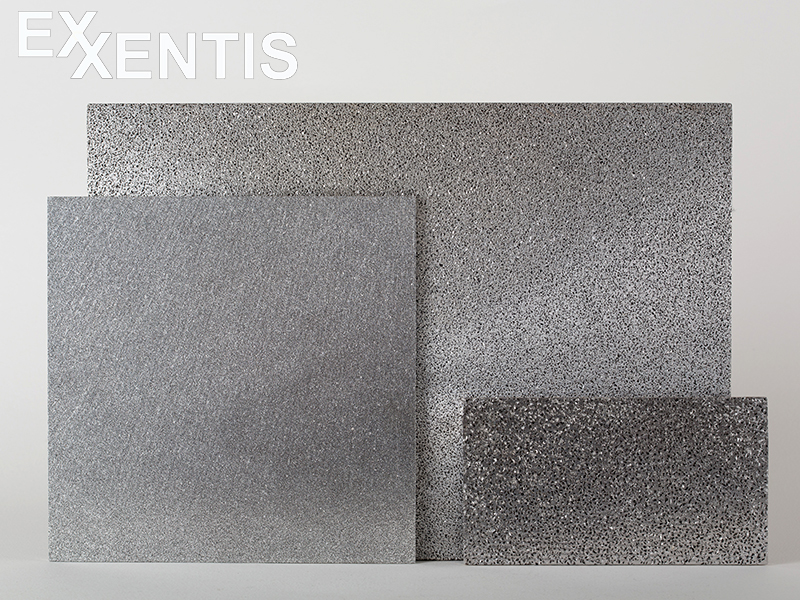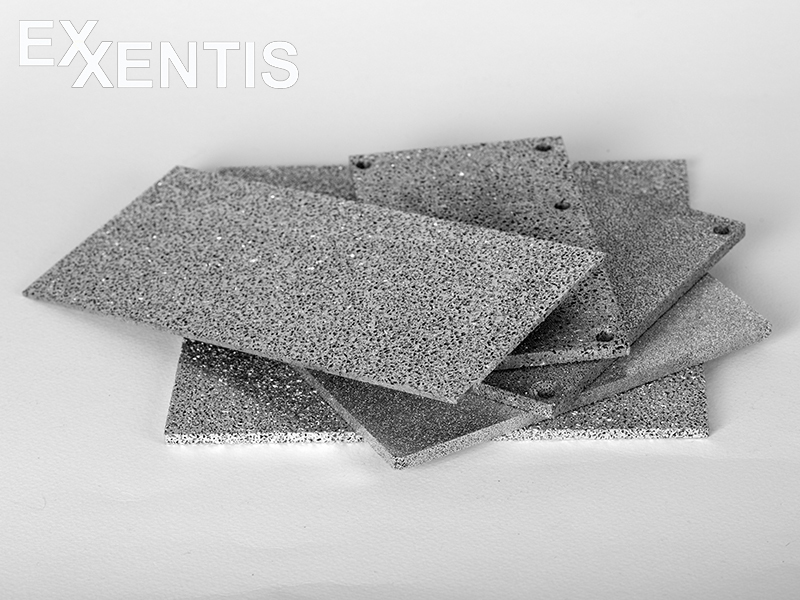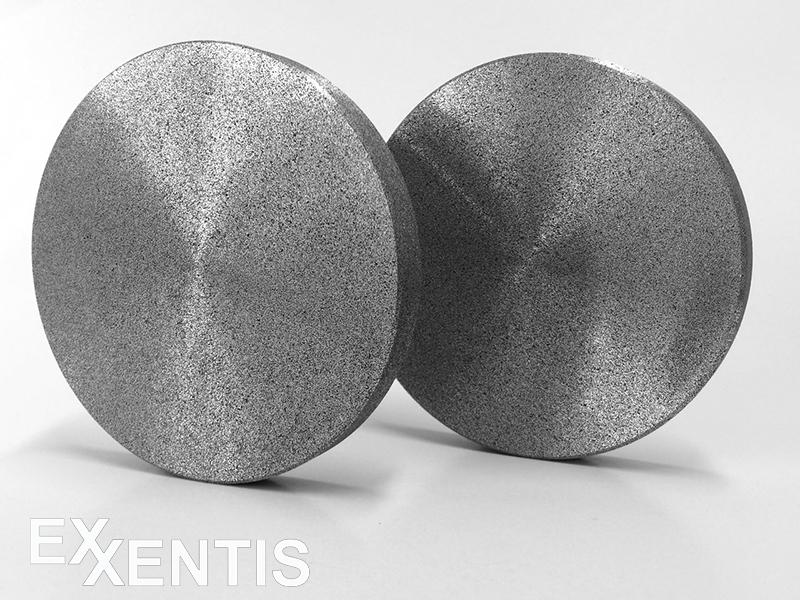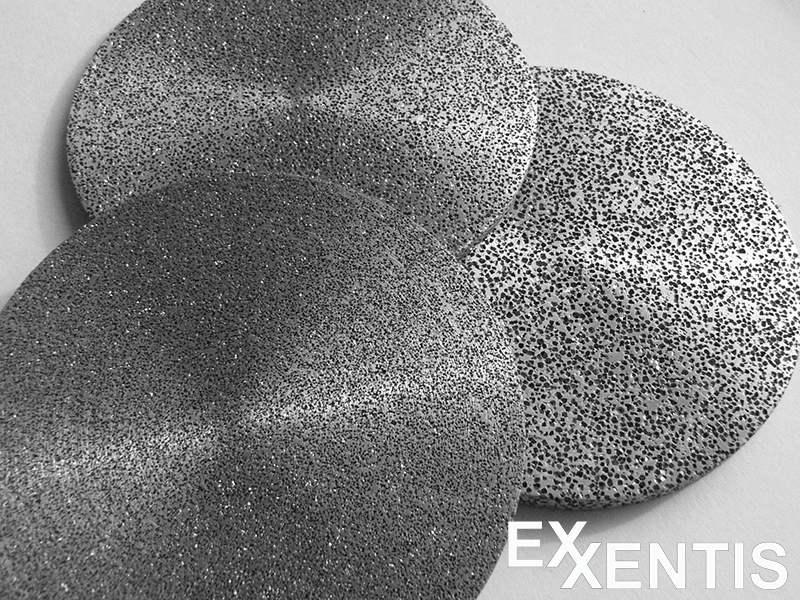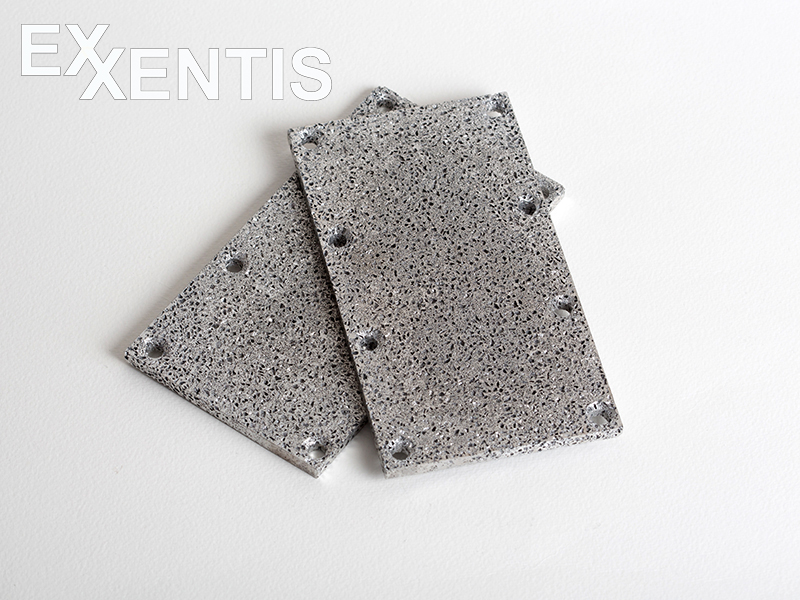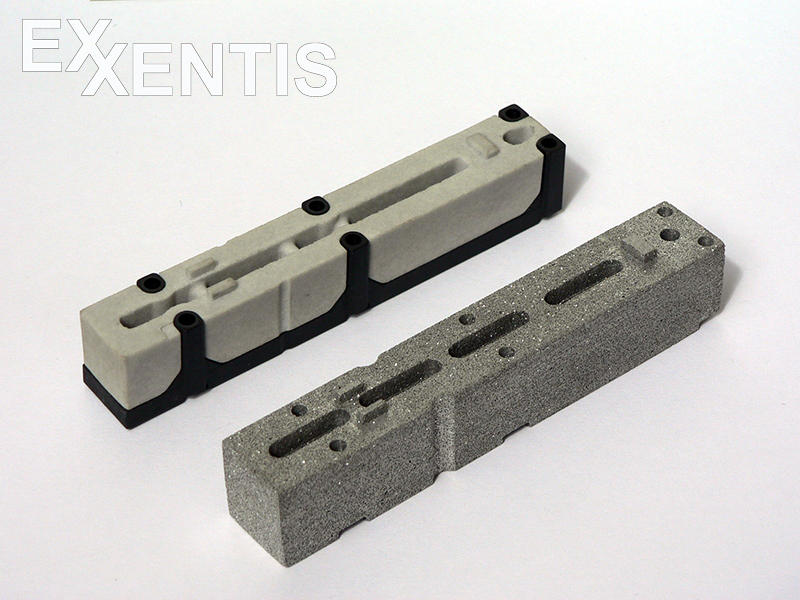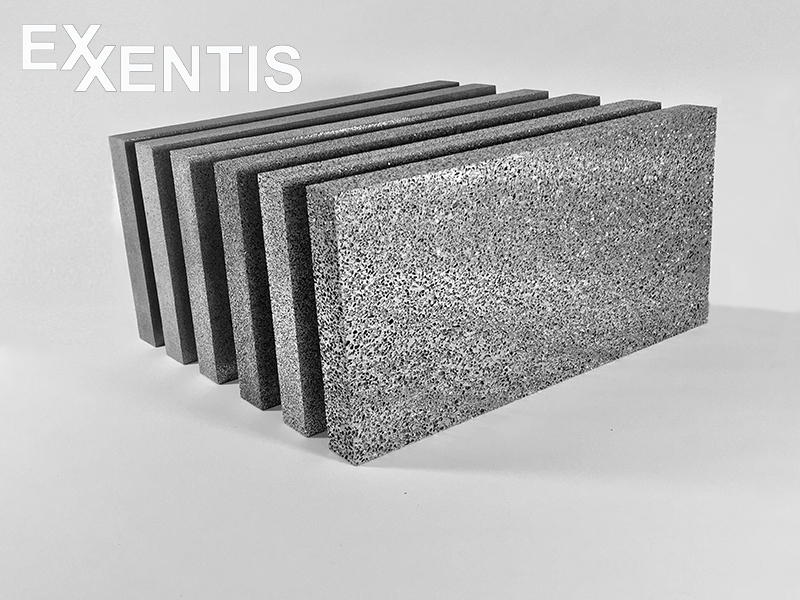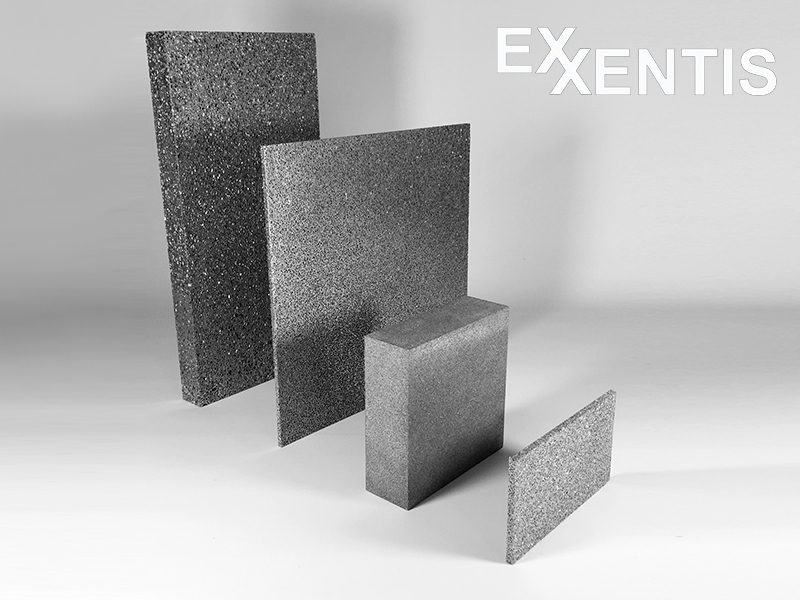Sintered plates or plates made of porous aluminium?
Sintered plates
Porous plates made of sintered metals have been known for a long time and are often used. A wider use of sintered plates is prevented by some significant limitations of sintering technology.
- If you want to get two sinter plates with very similar but different dimensions, you have to make an individual mould for each of the porous plates.
- With sinter plates you cannot freely determine the pore sizes. It depends on which metal balls are produced in large quantities.
- There are significant restrictions on the dimensions and wall thicknesses of sintered plates. The larger the product, the more complex the production.
Porous aluminium plates
All these limitations of sintered metal technology are overcome in the technology for the production of porous aluminium plates. Porous blocks, plates, sheets, discs and products in other forms made of porous aluminium are produced by machining the blank. The same blank can be used to produce porous plates of any dimensions and in any complex shape without significant additional costs.
You can select one of the 6 standard pore sizes. Depending on your requirements, individual salt mixtures / pore sizes can also be specified specifically for your task in order to obtain the required material properties of the porous aluminium plates.

Finished plates made of porous aluminium can optionally be machined as conventional aluminium, taking into account the adapted machining conditions.
Dimensions of porous aluminium panels can be 600х400х150 mm and larger. It should be noted that the specific weight of porous aluminium is only 1.2 – 1.0 g / cm3.
Main applications for porous aluminium plates:
- Soundproofing
- Fluidization
- Vacuum table, vacuum plate or vacuum clamping plate
- Filtration
- As lightweight material
and many others
Available sizes of plates and blocks can be viewed here.

